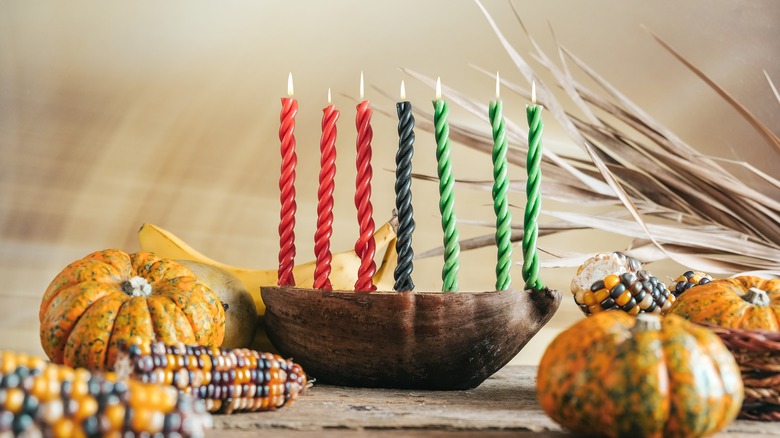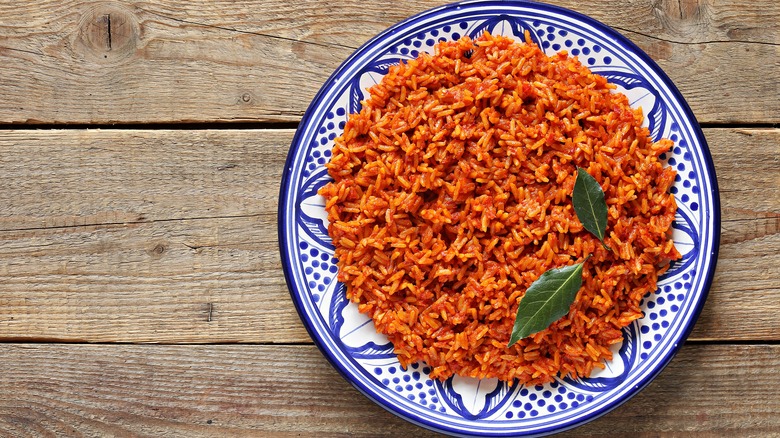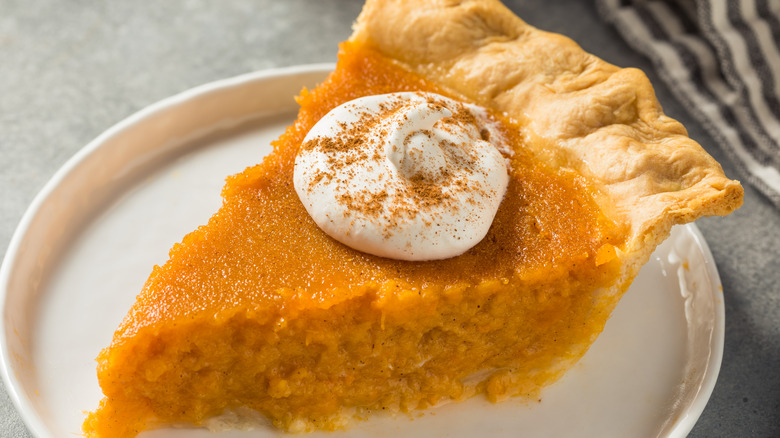How Foods Of The African Diaspora Became Popular Choices For Kwanzaa
With the all-consuming nature of Christmas, and to a much lesser extent Hanukkah, a lot of people forget that those aren't the only holidays occurring during the winter season. Kwanzaa itself may be a newer holiday, started in 1966 by Dr. Maulana Karenga, but its roots and traditions date back centuries, inspired by the experiences of both African Americans and the African diaspora itself.
And like most significant holidays, those traditions certainly include food. Indeed, kwanzaa's name comes from the Swahili phrase "matunda ya kwanza," which means "first fruits," a reference to harvest time. It's no surprise, then, that food would be a major part of the holiday — but it's not just one or two signature dishes. The celebration of Kwanzaa is deliberately intended to be an uplifting of the Black community at large, meaning you'll see a blending of food traditions from the African diaspora, with collard greens sitting next to jollof rice.
You'll see a wide array of dishes at Kwanzaa
The history of the harvest in Africa is a hugely important reference point to Kwanzaa itself. Culinary historian Tanya Hopkins makes that clear: "Kwanzaa is based on the many harvest festivals and rituals practiced across the African continent, during ancient and modern times, that would last about seven days, from the end of one year to the beginning of a new."
This wasn't an accident but a deliberate choice in Kwanzaa's creation. The focus on the harvest has led inexorably to food being a massive part of Kwanzaa traditions. Many of its African dishes may not be as familiar to American audiences who don't belong to the Black community or who haven't made a habit of venturing outside their culinary comfort zone: South African curries, Ghanaian groundnut stew, Nigerian jollof rice, etc. But African-Americans have had a galaxy-sized impact on broader American food culture throughout our history, meaning the traditional dishes presented at the Kwanzaa table would be highly familiar: Black-eyed peas, cornbread, jambalaya, and sweet potato pie.
Food is extremely symbolically important at Kwanzaa
Kwanzaa is based on seven principles, and one of these strongly applies to the blending of food cultures: "Umoja," or unity. At its core, the guiding principle of Kwanzaa is that of community, and historically, perhaps nothing has formed or united communities quite like food. In addition to the foods eaten at the Kwanzaa table, symbolic foods are often present. These include mazoa (fruits and vegetables like okra, sweet potatoes, and bananas that symbolize the bounty of the harvest), and the muhindi, ears of corn representing children still at home.
Though these are far from the only Kwanzaa traditions, it is a holiday inextricably linked to the importance of food in fostering a sense of community. The Kwanzaa table is a place where pan-African cultures blend and come together towards a common identity — and there can be little cultural identity to bind people together without shared meals.


